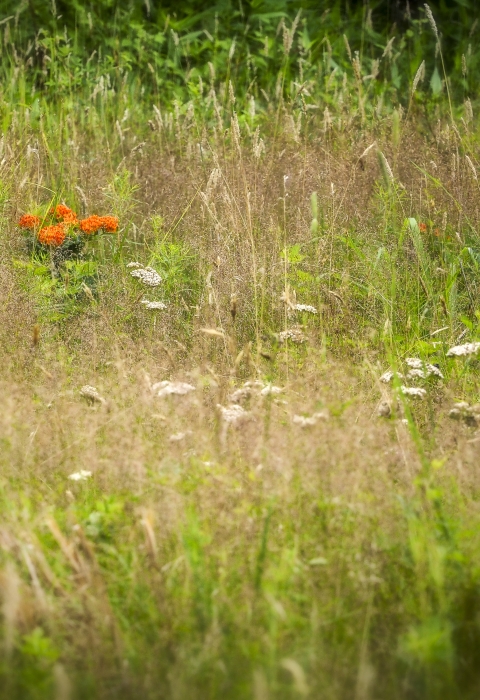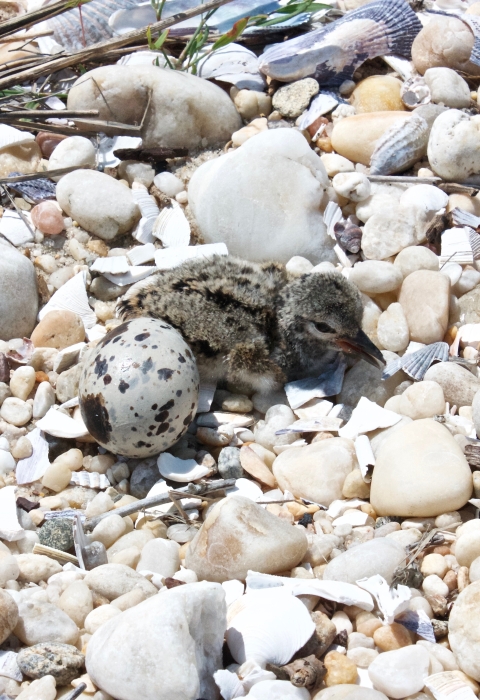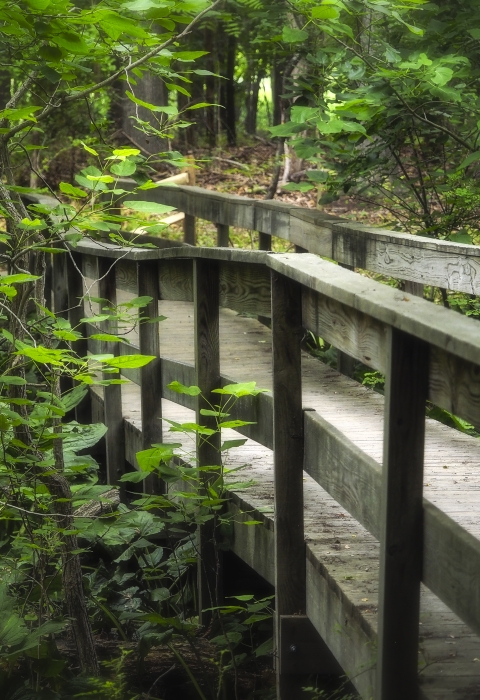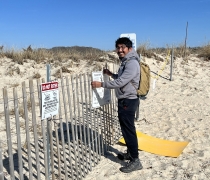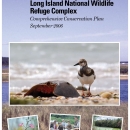Visit Us
Know Before You Go
The long-standing practice of hand-feeding birds on the refuge has had unintended consequences for several of our endangered and threatened species like piping plover, American oystercatcher, and least terns. Feeding wild birds can do more harm than good. Bird seed and human food attracts predators like raccoons and rats, which will prey upon our most vulnerable and endangered species by eating chicks and eggs. Even natural foods like seed can lack nutrients which birds would otherwise obtain from insects, nutrients which wild bird chicks need. When visiting the refuge we ask that you put the well-being of wildlife before personal pleasure, and refrain from feeding any wildlife, or leaving any food behind.
Wild birds can carry diseases like avian flu and psittacosis, which pose a threat to human health and safety. If you observe dead and/or sick birds take photos and videos and document the location. Contact the refuge at longislandrefuges@fws.gov to report.
- The refuge is open ½ hour before sunrise until ½ hour after sunset.
- No pets are allowed on the refuge, their presence disturbs wildlife;
- Late October through early April offer the best times to view waterfowl on the refuge. The forests come alive in spring with the arrival of migratory songbirds; while chickadees, black ducks, wild turkey and white-tailed deer may greet you year-round.
- In order to protect sensitive nesting birds, a portion of the beach is closed from April – August. During that time, binoculars help you see the refuge’s beach-dependent wildlife.
- Mosquitoes and flies can be prevalent during the spring and summer. Be sure to bring bug spray.
- Poison ivy and ticks are found throughout the refuge. Stay on the trails to limit your exposure.
- Restrooms are located at the Visitor Contact Station at the start of the trail.
Location and Contact Information
About Us
Established in 1954, the Elizabeth A. Morton National Wildlife Refuge protects a 187-acre peninsula on Noyack and Little Peconic Bays. Exceptionally diverse habitats include sandy and rocky beaches that fringe the peninsula, while wooded bluffs overlook the Bays. Morton consists of upland forest, fields, ponds, salt marsh salt marsh
Salt marshes are found in tidal areas near the coast, where freshwater mixes with saltwater.
Learn more about salt marsh , beach and a lagoon. These habitats are used by a variety of wildlife including white-tailed deer, eastern chipmunk, painted turtles, green frogs, songbirds and osprey. Waterfowl, such as long-tailed duck, common goldeneye and white-winged scoter, are common during the winter months, while piping plover, terns, and other water birds use the beach during the spring and summer months.
Tours
Points of Interest
- Hike the self-guided Wild Birds Nature Trail (1.2 mile) through woodland areas and onto the beach;
- Walk the beach for almost two miles along Jessup’s Neck Peninsula;
- Photograph white-tailed deer, turkeys and songbirds at close range;
- Observe a variety of threatened and endangered species including piping plovers; roseate, common and least terns; Kemp’s Ridley turtles and loggerhead sea turtles.
What We Do
Wildlife conservation is at the heart of the National Wildlife Refuge System. It drives everything on U.S. Fish and Wildlife Service lands and waters managed within the Refuge System, from the purposes for which a national wildlife refuge national wildlife refuge
A national wildlife refuge is typically a contiguous area of land and water managed by the U.S. Fish and Wildlife Service for the conservation and, where appropriate, restoration of fish, wildlife and plant resources and their habitats for the benefit of present and future generations of Americans.
Learn more about national wildlife refuge is established to the recreational activities offered to the resource management tools used. Using conservation best practices, the Refuge System manages Service lands and waters to help ensure the survival of native wildlife species.
Refuges deploy a host of scientifically sound management tools to address biological challenges. These tools span active water management to wilderness character monitoring, all aimed at ensuring a balanced conservation approach to benefit both wildlife and people.
Our Species
Hundreds of species of plants, fish, birds, and mammals flourish here, depending on the beach, bays, and adjacent lands for survival. Some are year round residents, some just pass through. What you can see changes with the seasons, but if you are quiet and patient there is always something to see.
Projects and Research
Management Goals
Refuge management goals are:
- Provide and manage a diversity of high quality habitats to support breeding, migrating and/or wintering birds, threatened & endangered species and fish.
- Maintain high quality habitats for all native wildlife and plant species.
- Establish and maintain partnerships to benefit wildlife for present and future generations.
